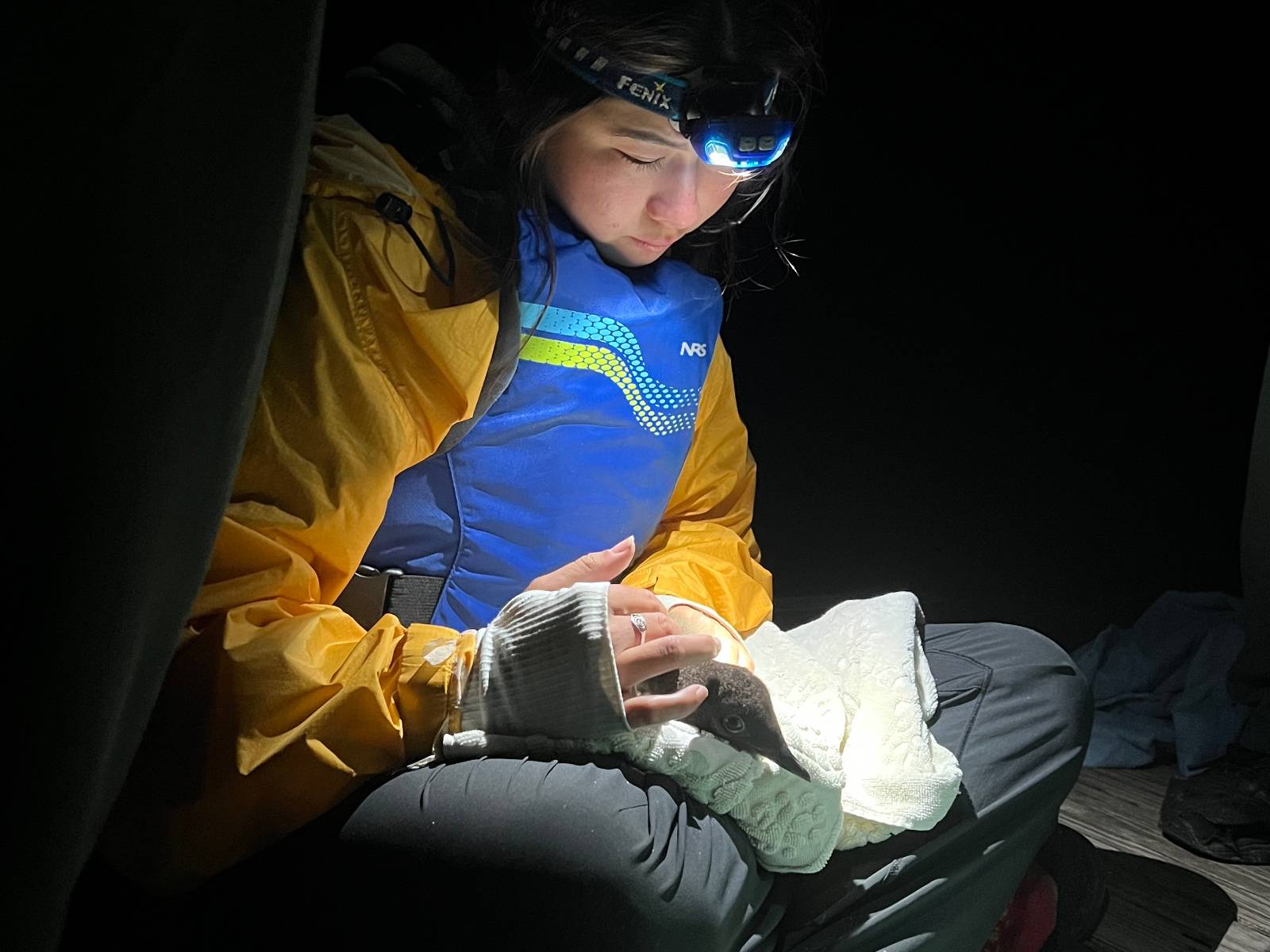Alexa Lim '25 is one of 31 student fellows who completed research with a community-based organization in upstate New York this summer as a part of the Upstate Institute Summer Field School. She describes the project below in her own words:
This summer I have had the privilege of working with the Adirondack Center for Loon Conservation. The Adirondack Center for Loon Conservation is a research facility working to protect and research loons. Loons have become a symbol of the Adirondacks, with their eerie calls heard throughout the park. Loons are an indicator species, meaning their status reflects that of the entire ecosystem. Even though the loon population has been steadily increasing after the mitigation of harmful pollutants like mercury, human encroachment on their habitat and climate change are still negatively affecting them today. Fluctuations in water levels threaten nesting sites, as loons nest right on the shoreline, and as humans develop more of the shoreline, loons lose their already limited nesting sites. Due to these threats, among others, loons need our conservation efforts to ensure their populations can thrive.
The Loon Center fills a critical gap in the region by monitoring the loon populations, as well as educating the community on their role in the ecosystem. The Center for Loon Conservation has monitored the status of loon populations in the region since 1998, and has conducted research studies such as monitoring their migration patterns and mating habits. The Loon Center is also committed to engaging with the community to teach the public about loon behavior and habits, which is vital for conservation efforts. Our community members preserve the local loons by protecting nests and attending our loon-friendly lake certification program, which teaches community members how to ensure the lakes are a safe environment for loons. Without the involvement of the public, the work the Loon Center does would not be possible.
I have spent half my time kayaking on lakes and ponds observing loon behavior and checking for leg bands. Leg bands are metal bands wrapped around the loon's legs right above the foot. Each loon has a unique color combination and number on the leg, which identifies the individual loon. This banding information can be used to indicate information about the year the loon was banded, mating patterns, and migration patterns, which all inform our understanding of loons' behavior. I also monitored the nesting patterns and survivorship of chicks. Unfortunately, of the four nests I monitored, I observed only one successful nest with one chick hatched, but this chick was soon predated. These data will contribute to the research efforts conducted at the center to continue conservation efforts and learn more about loon behavior.
For one week in July, our team goes out onto various lakes throughout the Adirondacks capturing Loons and banding them to further the research efforts. Loon capture efforts occur from sunset to sunrise. When a loon is captured, blood work, feather samples, and general body measurements are taken. The bands we add allow us to determine if the loon returns to the lake and remates with the same mate next year. Banding week is one of the most exhausting yet the most rewarding part of the work I have done. The data set furthers the research effort we are conducting looking at pollutants, health, and behavioral patterns of loons.
When I was not out on a lake, I worked to engage with the visitors in the Loon Center located in Saranac Lake. There, I created and distributed a survey about loon courtship and nesting to gauge visitor knowledge. The results will be used to curate the up-and-coming exhibits: Year in the Life of a Loon. The exhibits will detail a loon’s life, including a section dedicated to their courtship and nesting behavior. The Center is a key part of our project, as it works to educate anyone who comes through Saranac Lake, ranging from tourists who have never seen loons to people who help us monitor the loons.
Before coming to the Adirondacks, I had little knowledge of loons other than recognizing their famous calls. While learning about loons and their behaviors, I have come to appreciate them far more and understand the need to conserve them. I have also learned the importance of engaging with the surrounding communities. The people and communities around the loons do the majority of the conservation work. Without their involvement throughout the Adirondack park, our outreach would be very limited. The community allows the center to thrive and continue to collect vital data. This Upstate Institute Fellowship has furthered my passion for conservation and provided me with invaluable knowledge and skills that I will use throughout my career and life.
